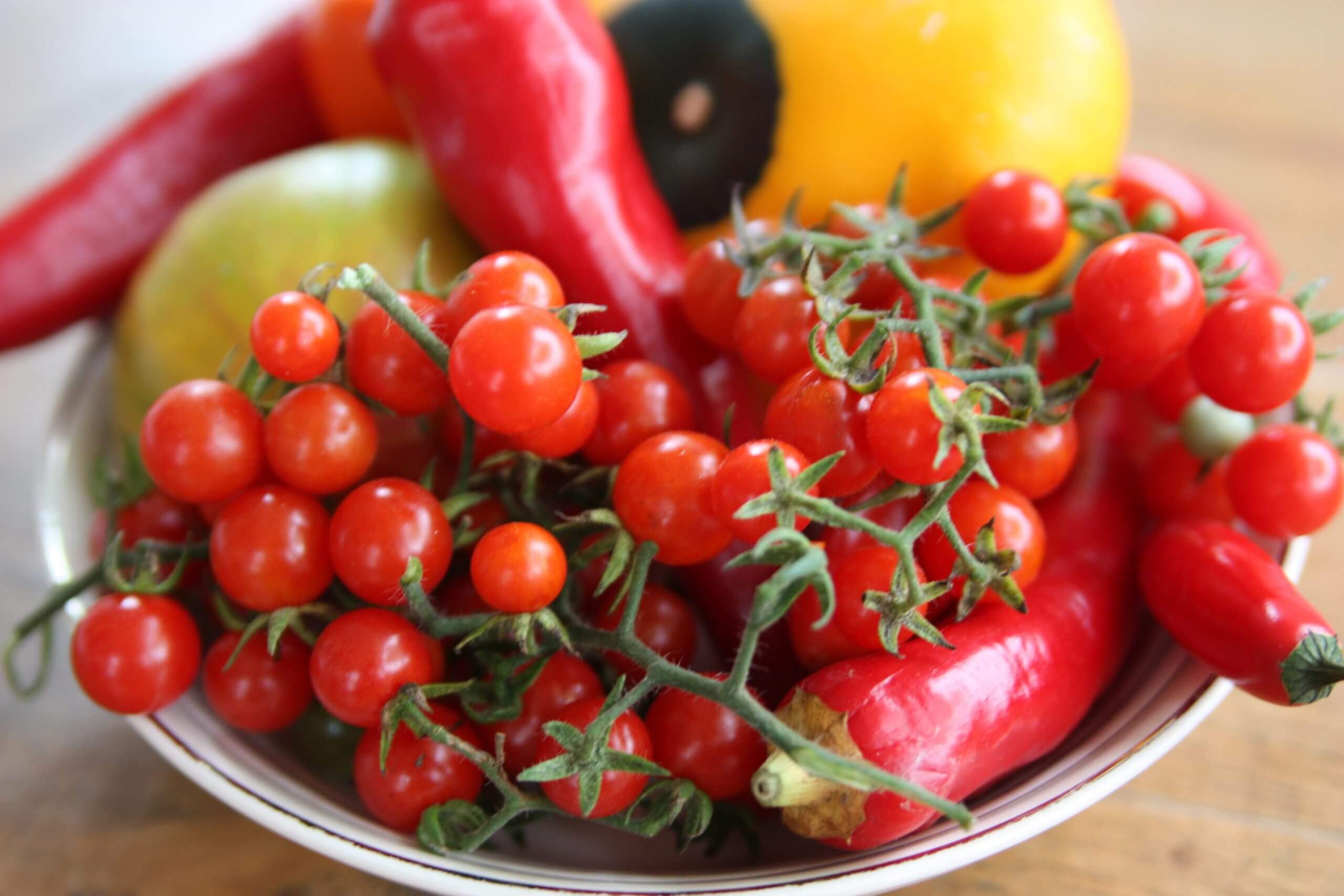
Seed saving is easy, saves money, and ensures that your seeds have come from a reliable source (your garden!). Smart seed saving requires that you (1) allow your seeds to fully mature, (2) clean your seeds properly, (3) store your seeds correctly, and (4) know exactly what you are saving and storing. Step 4 is probably the most essential and least understood.
Seed-saving gardeners want to collect true-to-parent seed that performs like the parent plants, but this requires a basic understanding of heirlooms, hybrids, and pollination. Will the tomato seed you are saving be a true-to-parent heirloom, or are you saving the anomalous, mystery progeny of a hybrid? To answer these questions, you must know your vegetable varieties and their hybrid statuses.
Hybrid Seeds
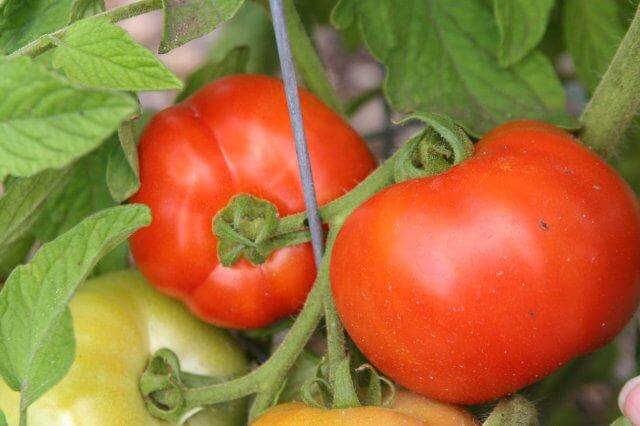
If you bought any F1 hybrids, then these vegetables were hybrid crosses between two carefully selected, known parents. Hybrids are more vigorous and have desirable traits that make them special—such as added disease and pest resistance and great fruit production. With F1 hybrids, crop performance wins, but seed saving doesn’t because they don’t yield true-to-parent seeds. The only way to grow a given hybrid each year is to purchase new seed from a vendor. Hybrid seed is also more expensive because the hybridization process takes more time and money.
So, what if you did collect F1 hybrid seed? What do open-pollinated hybrids yield? Their seed would produce unstable variations of the parent plants. For example, take the slicing tomato ‘Big Red’, which is a disease-resistant F1 cross between the two tomato varieties, ‘Pritchard’ x ‘Jubilee’. An open-pollinated ‘Big Red’ may cross with other garden tomatoes, which will introduce variation. In addition, the saved seed would also yield plants with a mix of traits representing the original parents, ‘Pritchard’ and ‘Jubilee’. What a mess! There is no way to know what you might get.
Heirloom Seeds
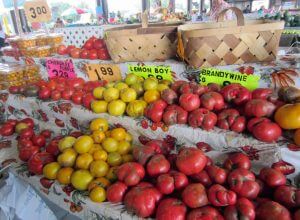
Open-pollinated heirloom varieties are more stable. This means that you can collect them from year to year, and the collected seed will be like the parents, with few exceptions. For example, if you save seed from ‘Brandywine’ (1889), ‘Black Krim’ or ‘Gold Medal’ (1921) tomatoes, the seed will produce plants much like the parents.
On occasion, an unexpected variant might arise in saved heirloom seed. It is up to the gardener to assess whether new variant should be maintained. If a mystery plant appears with desirable traits, then maybe you have found something special, and selection is in order. Selection means carefully choosing variants over generations for desirable traits, such as large and tasty fruit, good growth habit, and productivity.
There are many seed vendors that specialize in open-pollinated heirlooms that can be saved with confidence. The Seed Savers Exchange is one of the oldest and most reliable sources of old, heirloom varieties.
Collecting, Cleaning, and Storing Seeds
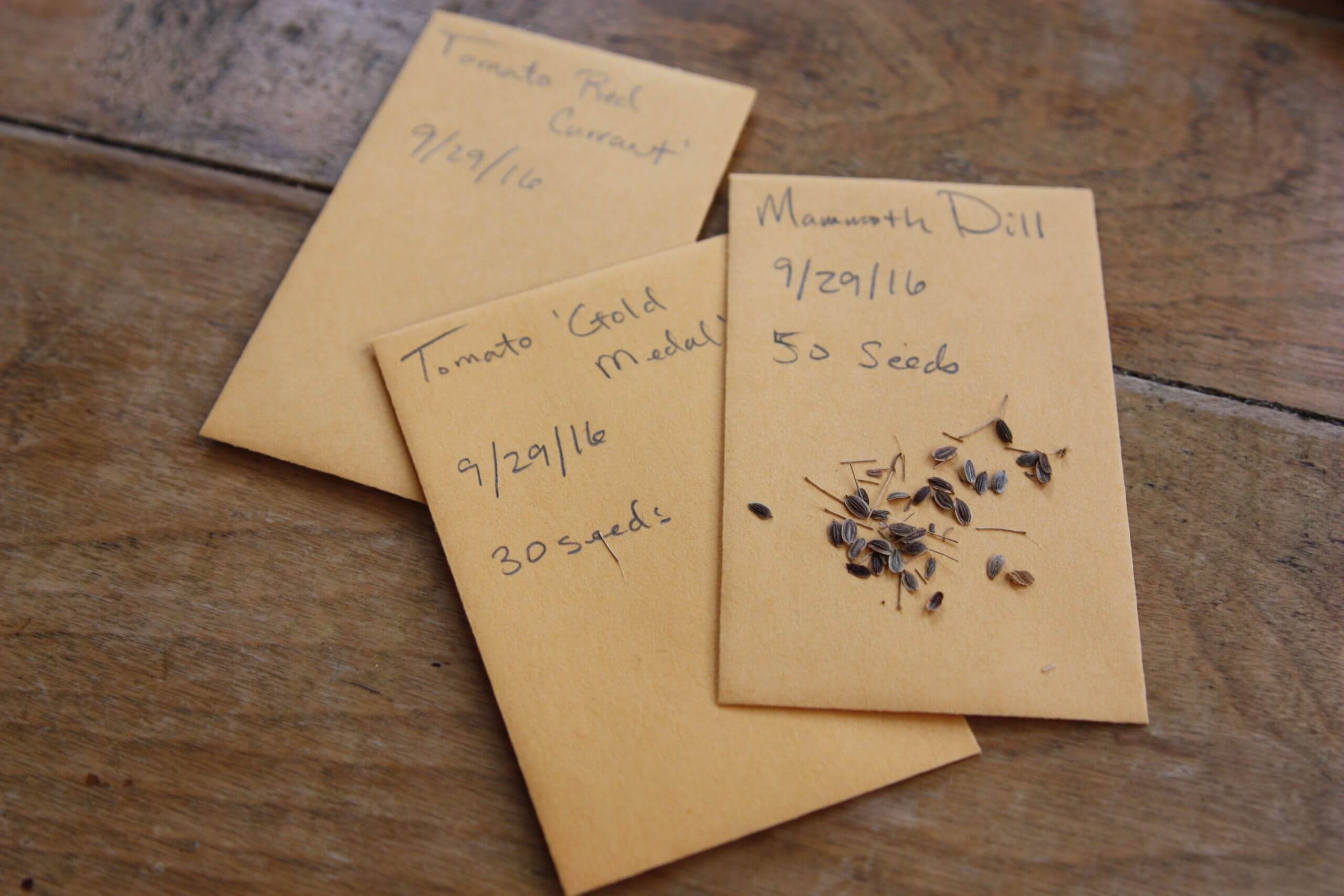
On average, seeds cost around $3.00 a packet, so you can save money by collecting your own. Good, viable seed can only come from fully mature fruits. This means that bean or okra pods, husks of corn, or tomato and pepper fruits must be fully dry, colored, and ripe before collection. You might also consider leaving a few herbs, carrots, lettuce, beets, and radishes to flower and set seed for collection, in addition to the more obvious fruiting crops.
Dry Seed Cleaning
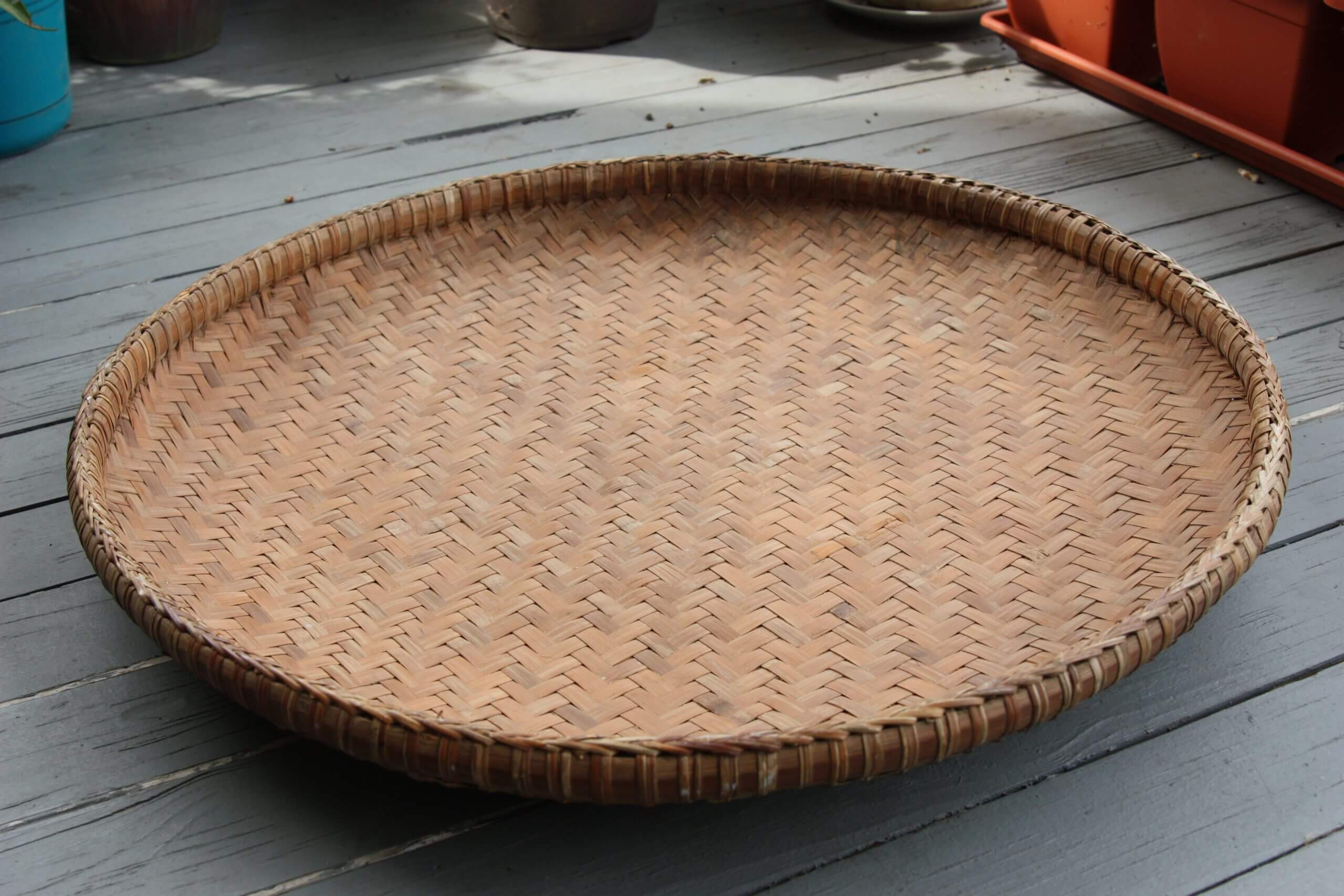
It is easy to collect seeds from dry or open fruits. For example, pepper seeds can be lightly scraped from cavities (beware of spicy fingers from hot peppers!), poppy seeds shake out of dry capsules, and corn kernels pop off of dry ears. This process, called threshing, may be clean or messy, depending on the seeds and their fruits.
Threshed seeds often contain chaff (unwanted bits of dry plant material, dirt, and insects), which can be picked out by hand, sifted off, or removed by winnowing. Winnowing is the process of removing the lighter chaff from the heavier seed by tossing it in the air and allowing the wind to carry the chaff away.
Winnowing baskets were created across cultures to assist with this process. These can still be purchased today and used for home seed cleaning.
Water winnowing is another option for dry seeds. Here, very small seeds are placed in a bowl of water. The seeds will settle to the bottom, and the chaff will float to the top. Then the water can be gently poured away until the seeds are left at the bottom. The seeds can be gently picked up with a paper towel to dry.
Wet Seed Cleaning
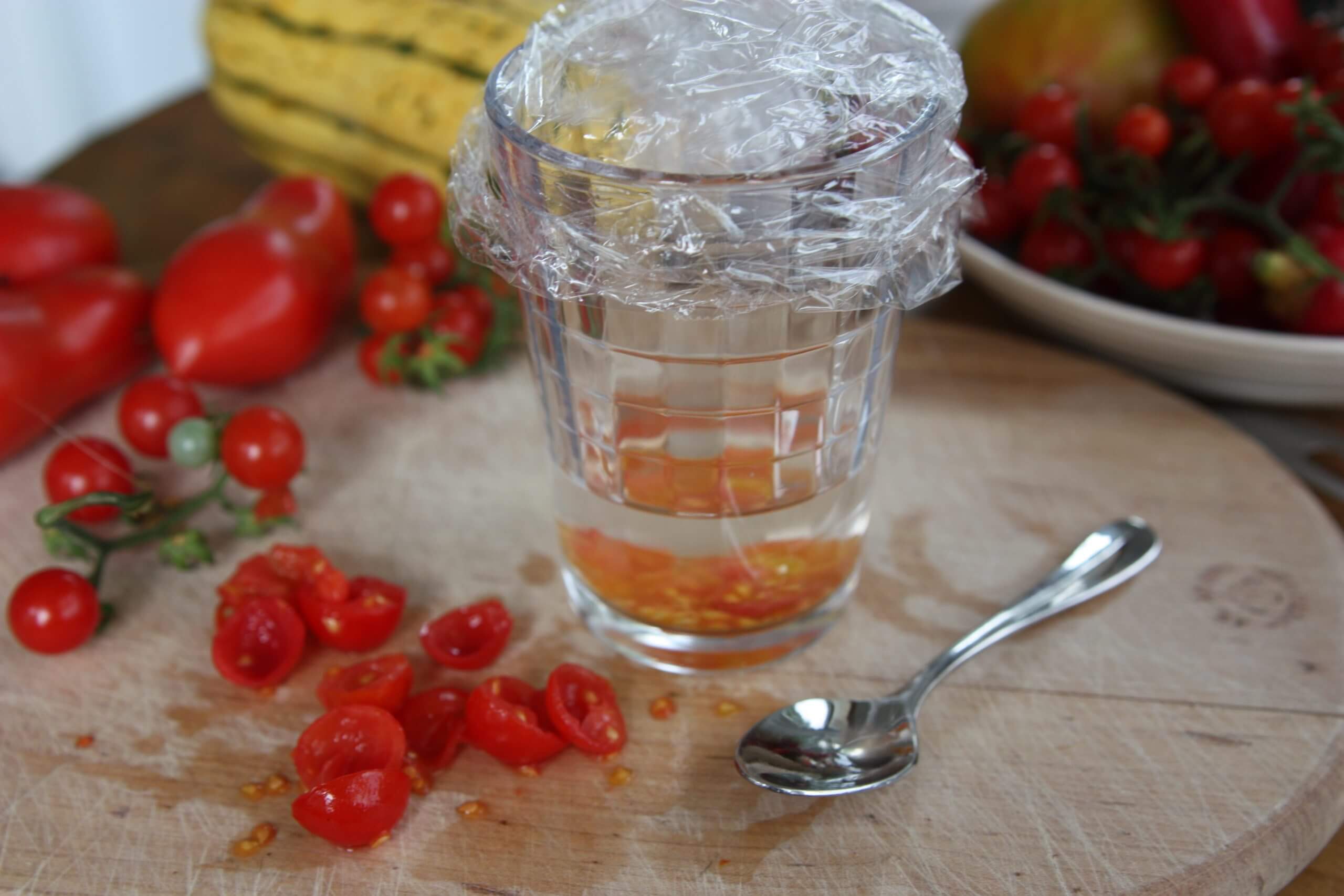
The seeds of fleshy, wet fruits require more elaborate cleaning steps. Tomato seeds are the messiest to save. The juicy fruits have seeds with a slimy membrane that should be removed to ensure good storage and germination.
In nature, the fruits are eaten by animals and the seeds pass through and out, membrane free, but this is hardly helpful for the seed collector. Two-day fermentation is the easiest way to naturally remove the seed membranes.
Start by cutting open the tomatoes and scraping out seeds from the fruits. Place them in a clear, lidded glass or jar. Add 2 to 3 inches of clean tap water. Lightly cover and allow the seeds to sit for one to two days, or until the contents become frothy on top. Pour the contents through a sieve and rinse the seeds in water until clean. Allow them to dry completely on a clean, dry towel.
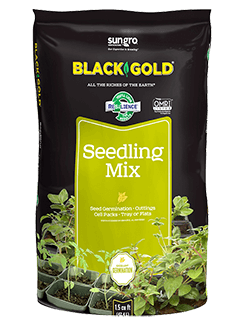 Pumpkin, melon, and cucumber seeds can simply be scooped and cleaned in a fine colander under warm running water. Pieces of membrane may need to be picked away from the pumpkin or squash seeds. The clean seeds will be a little slippery, but that is okay. Dry the seeds on a light colored towel before packaging.
Pumpkin, melon, and cucumber seeds can simply be scooped and cleaned in a fine colander under warm running water. Pieces of membrane may need to be picked away from the pumpkin or squash seeds. The clean seeds will be a little slippery, but that is okay. Dry the seeds on a light colored towel before packaging.
Package and label the seeds before storage. Plain paper packets are best. Number 1 coin envelopes are the perfect size and shape. Be sure to label each with the plant name and date, for consistency. Store the packets in a lidded paper box kept in a cool, dry place.
Then, towards winter’s end, break out the Black Gold Seedling Mix, plant up your seeds, and start your vegetable garden planning anew.

